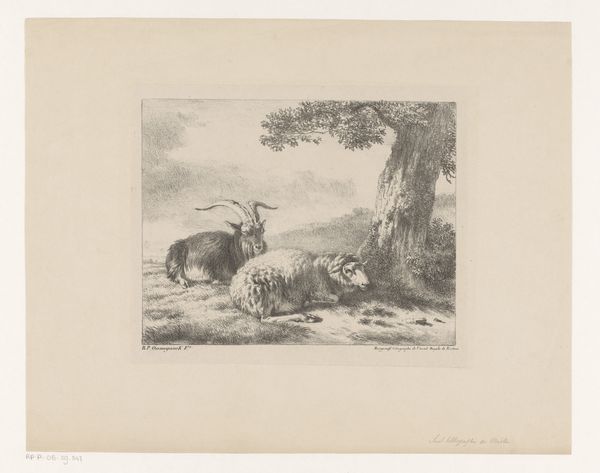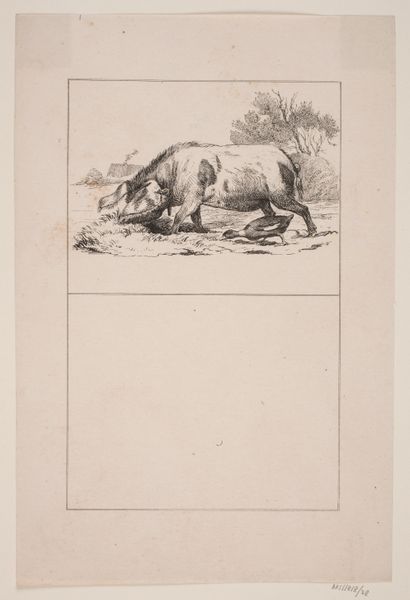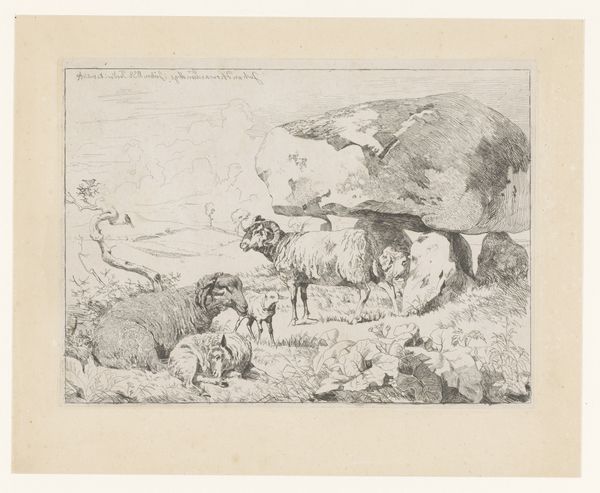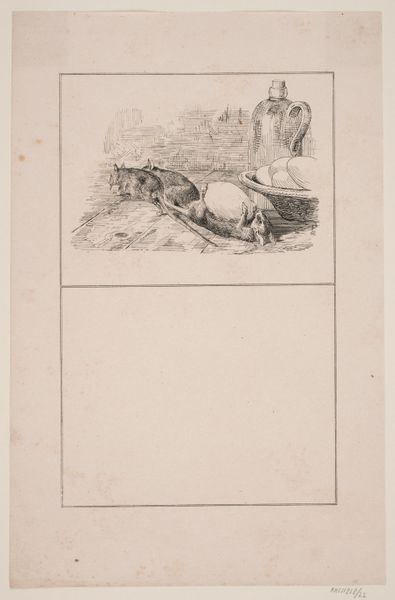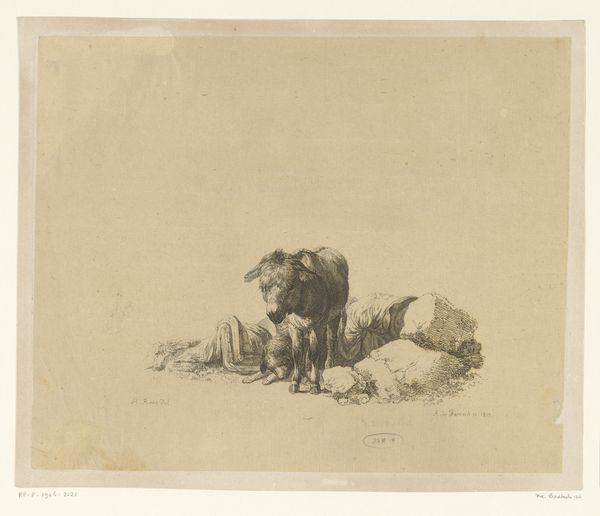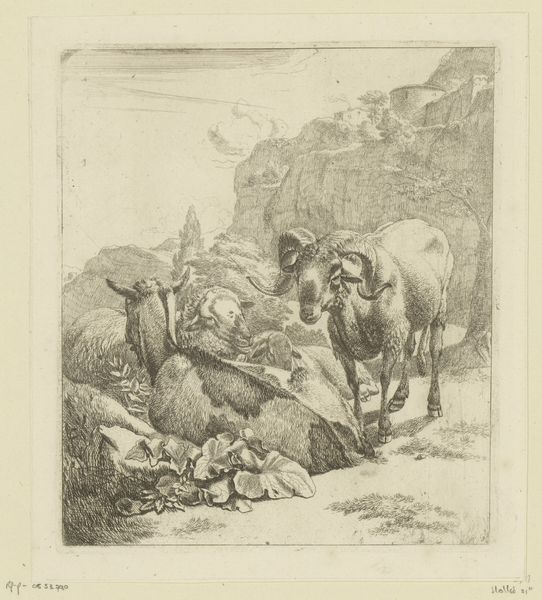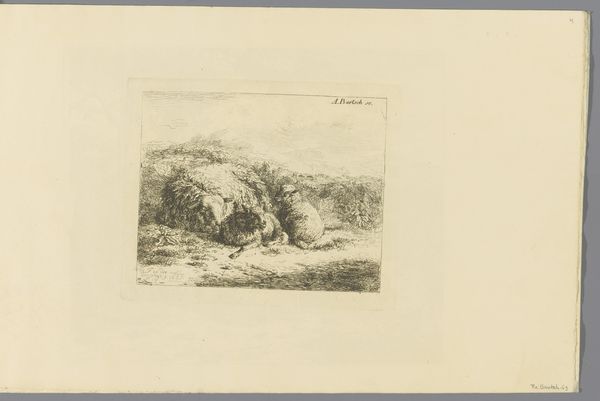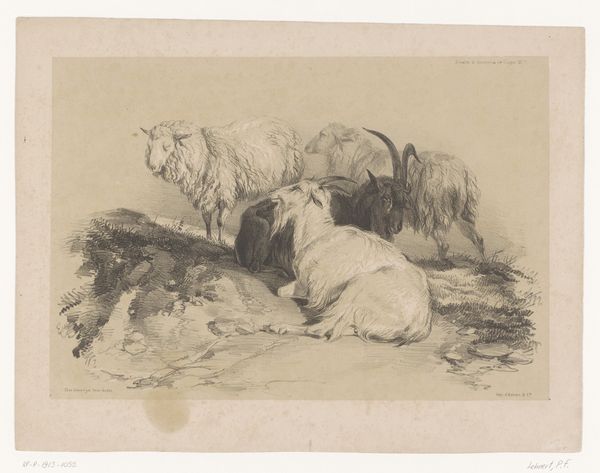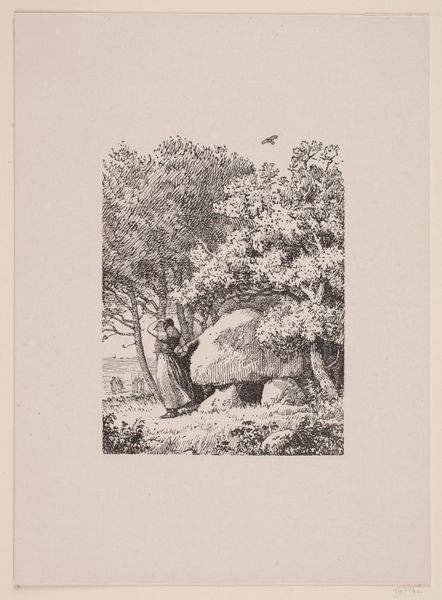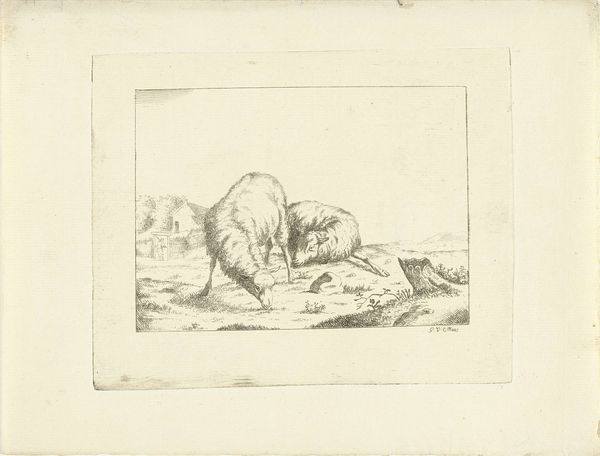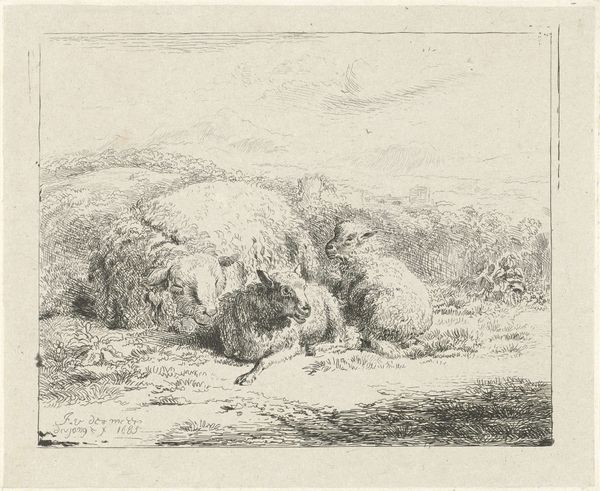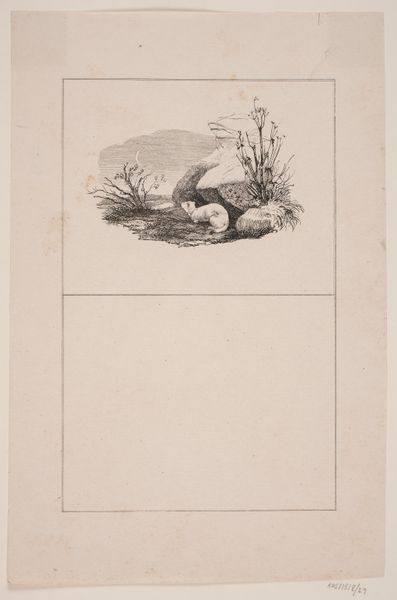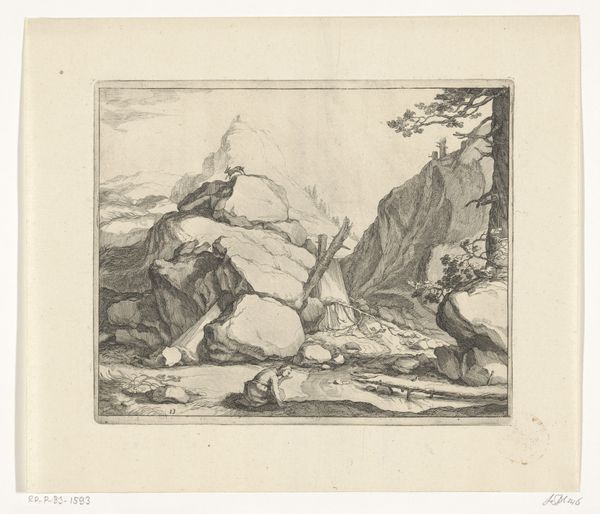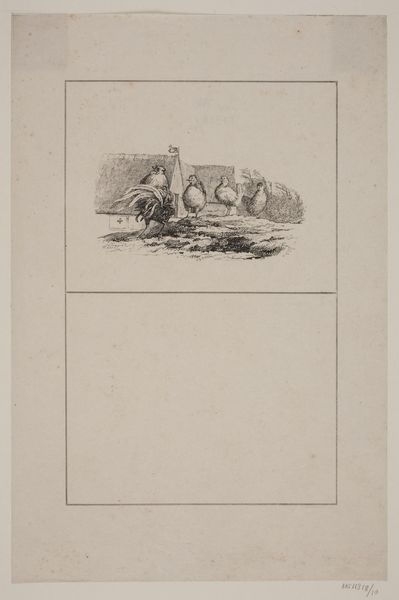
Dimensions: 260 mm (height) x 177 mm (width) (bladmaal)
Harald Jensen created this print, Vogterdrengen, using etching, a traditional printmaking process. Lines are incised into a metal plate with acid, which then holds ink to make multiple impressions. Look closely and you’ll notice the fineness of the lines, carefully rendered to create tone and texture. Jensen skillfully uses hatching and cross-hatching to define the forms of the boy, the sheep, and the landscape, using subtle gradations to give depth. The subject of the print, a shepherd boy resting amongst his flock, carries particular cultural significance. While seemingly idyllic, it reflects a social reality of rural life and the labor of children, who are frequently involved in agrarian tasks. The wool industry, which the boy and sheep are a crucial part of, was a major economic force at the time. This etching is more than just a pastoral scene; it subtly nods to the economics of the era. Understanding the social and material context of this etching gives insight into the intersection of labor, nature, and art. It prompts us to consider what is often overlooked in favor of idealized imagery.
Comments
No comments
Be the first to comment and join the conversation on the ultimate creative platform.
